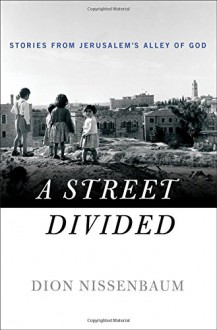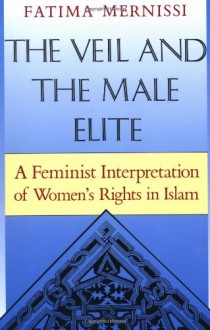

The finale volume of Modern Library’s three-volume reprint of Edward Gibbon’s The Decline and Fall of the Roman Empire covers chapters 49 through 71 of the author’s vast magnum opus. Beginning with the Iconoclast controversy in correlation with rise of the Vatican and Holy Roman Empire in the 8th century and ending with a description of the causes and progression of the decay of the city of Roman in the 15th century, Gibbon relates in detail the political, martial, social, and theological developments in both Europe and the Middle East ultimately led to the end of Byzantine Empire with the fall of Constantinople to the Ottomans and the state of the city of Roman at time of the Roman Empire’s complete end.
The majority of the 22 chapters deal with the rise of Islam and the resultant political and martial effects that would ultimately determine the fate of the Byzantine Empire. Although beginning with the Iconoclastic controversy that began the schism of the Christian church as the bishop of Rome rose to power in the West, Gibbon used those developments to launch into how Islam rose in Arabia then spread across not only areas once under Roman control but also their long-time Persian rivals in the aftermath of the reconquests of Heraclius. While detailing the internal struggle within the Caliphate period, Gibbon reveals how Emperors attempted to combat this new faith and military force to increasing little effect has time went on.
The thorough retelling of the numerous political changes throughout Asia that affect the fortunes of the Byzantine Empire shifted the focus away from the ‘Roman’ world to locations as far east as China, but revolutions of people in these areas would play into the fortunes of Constantinople. Also playing into fate of Byzantine was the barbarian Christian West that the Emperors called for aid not only from kings but the Pope as well. Unfortunately the resulting Crusades and mercenary arms that went East would inflict a mortal wound to the Empire in 1204 thus beginning a centuries long death spiral that only lasted as long as it did because of internal revolutions with the growing Ottoman Empire until 1453. This dreary recounting of the end of Byzantium is mirrored by Gibbon in his recounting of the history of the city of Rome itself throughout the Middle Ages until the fall of the New Rome in the East.
This finale volume of Gibbon’s life consuming work revealed the struggle of the Eastern Empire of Byzantium to continue against a succession of Islamic powers and its ultimate demise thus completing the fall of the Roman Empire. Yet in retelling the eventual fall of Constantinople, Gibbon paints a huge picture for the reader about how events both near and far away from the Bosporus affected the fortunes for both good and ill of the New Rome. And in recounting the history of the city of Rome throughout the Middle Ages, a reader sheds a tear with Gibbon about the loss of the monuments of both Republic and Empire due to the necessity or vanity of the people of Rome after for the fall of the Western Empire.

A Very Readable Narrative Overview
For those in the West, the Crusades were a series of military expeditions that Western Christians launch against Muslims to reclaim the Holy Land, however for the Arabs and the rest of the Muslim world, the Crusades were a shocking event. “The Crusades through Arab Eyes” is a narrative history by Amin Maalouf to give Westerners a glimpse of how the Muslim world in general saw the Crusades as they were happening over two hundred year span.
Maalouf starts his narrative in Anatolia with the beginning of the First Crusade from the perspective of the Seljuk Turk Kilij Arslan defending his kingdom against his neighbors then against what he believed to be “Franj” troops fighting for the Byzantine Empire. However as the Turk sultan was to learn as well as others, these Franj had different plans. Maalouf’s follows the progress of the First Crusade and the subsequent 200 years through the historical writings of Muslim chroniclers and how the Muslim world reacted throughout that period. The vast majority of the book is the history of the Muslim political and religious currents that interacted and reacted with the Franj, who were themselves divided into permanent residents and military adventurers that came and went.
In the Epilogue besides looking at the long-term effects of the Crusaders on the Middle East, Maalouf highlights something that readers will noticed quickly and what I have already alluded to in this review. While the chroniclers were Arabs, the political and military leadership throughout the Crusader era were Turks or Kurds. During the roughly 200 years that the Crusades took place, the native Arabs watched and experienced the forces of two “foreigners” ruling over them which is a very impactful thought to keep in mind while reading this book.
I first read sections of “The Crusades through Arab Eyes” in 2003 for a Middle East history class. Having now read it in full, I can say that seeing it without the Western romantic veneer or viewpoint brings the period into better focus. While not in-depth as some other books might be, this book gives the reader an easy to follow narrative overview of The Crusades “from the other side”.

Disclaimer: ARC via Netgalley.
While Nissenbaum’s title refers to a street that is home to both Muslims and Jews in Jerusalem, the title does describe any street really. A street cuts though; it separates two blocks or two sides from each. True, it usually isn’t a huge separation, and one that is easily solved by crossing the street. In most cities, you can even hear the noise from the residents across the street. A street by its nature is at once a way of transportation, a way of bringing together, and a way of separating.
Nissenbaum’s street is in a neighborhood of Jerusalem, it is a border street, the flashpoint as it were, and yet it is also a street where Christians, Jews, and Muslims co-existed with various degrees of success. This street is, today, called Assael Street, though it existed far back in history and religion. It is a street where Nissenbaum himself lived.
The history of the area is traced first, and there is the story of the lost denatures which raises all types of questions – you can save teeth. Then, Nissenbaum chronicles the views and lives of various residents, both Muslim and Jewish. It is to Nissenbaum’s credit that he does such an even-handed job in depicting the various conflicts that occur on the street. There is a story about writing/painting on a wall, and Nissenbaum’s reporting of this conflict between a Muslim family and the Jewish woman whose wall was painted on, not only capture two different cultures but also different ways to look at what should have been done. In other words, Nissenbaum doesn’t take sides.
This is true even when the case isn’t simply one of Muslim vs. Jew. There is a chapter that describes a Jewish family that moved into the neighborhood. When the daughter reaches her teen years and draws unwanted attention from the young Muslim boys in the neighborhood. The interesting thing is reading the interaction of the parents. The father thinks it is boys being boys; the mother is upset, not so much because of who the boys are, but because of what they are doing. She objects to the cat-calling, and when she talks about culture in this context, she seems to be referring to modern day versus back then. It’s a wonderful use of reporting because it captures the discussion about catcalling, one that occurs in a great many places, as well as division between men and women in how it is viewed.
And perhaps that is the point.
Nissenbaum looks at the impact of Israel on its Arab citizens, on how Jews combat various isms, and how Muslims do. He looks at the conflict over land. But at the heart of this book is how alike everyone is, whether or not they know it. How, regardless of the family, fathers and son view things differently, the “war” between eh genders, the need to put friendship first. In many ways, the book appeals to the humanity of people – like the story of the denatures that starts the book.
Perhaps, there is hope after all if we use the street differently.

Mernissi’s book is a history of Islam and the introduction of the veil. She draws upon Islamic scholar, to prove her thesis that the veil is social construct more than a religious must. Her chapter about the hiqab is game changing.
In part, her thesis is that the Prophet was too progressive for the men of the time, that what he was advocating was too much of a change upon tribal customs where men were able to dominate. What is also interesting, though Mernissi does not focus or really mention it, is the similarity between Islam, Christianity, and Judaism in treatment of women.
I do wish, though I am not sure how this could have been covered in this book, that Mernissi had detailed, somewhat, the difference between the Prophet’s daughter and his wives. The wives, for the most part, seem far more progressive and are mentioned, in particular A’isha, several times over the course of the book. Why was his favorite daughter far more conservative?
Still, if you are curious about the veil or the early days of Islam, this book is highly recommended. In particular if you have read Ayann Hirsi Ali or Mona Eltahaway, you should check this book out.